The year 2020 has undoubtedly been one of the most challenging and unsettling years in many of our lives. These times have impacted everyone but also had a significant impact on young people, especially those who live with learning difficulties, disability or life-limiting medical conditions. In this blog, I’d like to share some positive and hopefully useful thoughts from a truly inspirational experience I have had recently as the Drama Artist delivering Eco Drama’s Out to Play project at East Park, a school in Glasgow for pupils with Complex Support Needs. I’ll also talk about how my Creative Outdoor Learning approach has developed to be more inclusive of learners with complex support needs over the past few years since I first began delivering the Out to Play project with mainstream primary schools in 2017.
The School
East Park is one of a kind. A registered charity, based in the Maryhill area of Glasgow, East Park School has provided Education and Supported Accommodation services to children and young people with additional support needs, including autism, since 1874. Having previously been Drama Artist in Residence at two different local authority schools for children with Complex Needs, I brought some experience to this residency but also knew I had a lot to learn from East Park’s experienced team.
The Pupils
In terms of the pupils, the school states that:
“All pupils have a significant learning difficulty coupled with other potential barriers to learning including physical disability, sensory impairment, ADHD (Attention Deficit Hyperactivity Disorder), Attachment disorder, Autism and challenging behaviour. A high proportion of the pupils are on the autistic spectrum and require specialist environments and strategies in order to access a rich and purposeful curriculum. … Many are non-verbal communicators, a significant number require personal care, the majority have no sense of danger, and all require a high staff ratio to enable them to successfully access the full curriculum and the community.”
A lot of big words and concepts in this statement, especially if you’re not familiar with them. There are good reasons why staff need to discuss the pupils’ different situations with incoming staff ahead of time, but as one of the school’s principal staff said, “I can tell you these facts, but you need to be here.” This phrase rings true for me when working with most groups of young people, particularly those with complex support needs and/or on the Autism Spectrum.
Creative Content
Since 2015, the Out to Play methodology has developed into an easy-to-follow session structure for mainstream schools and nurseries who take part in a 5 week residency, with creative freedom within this format for the Drama Artist and teachers to put their own spin on it. Out to Play is always responsive and tailored to each individual school, however the way we facilitate the project has to be even more flexible in schools catering to learners with Complex Support Needs. To begin planning the 5 week residency for East Park, I spent two days just spending time at the school observing pupils and their staff and just taking everything in. Responding to what I observed, I then picked a broad nature theme and a story for each week and began thinking about how this broad theme could be tailored for each individual pupil or group of pupils so that they would get maximum engagement from the sessions.
In week one the theme was ‘Mud and Mini Beasts’ and linked to a story about a wiggly worm who lived in the soil. We spent time hunting for mini-beasts, exploring soil and learning about its importance in our ecosystem.
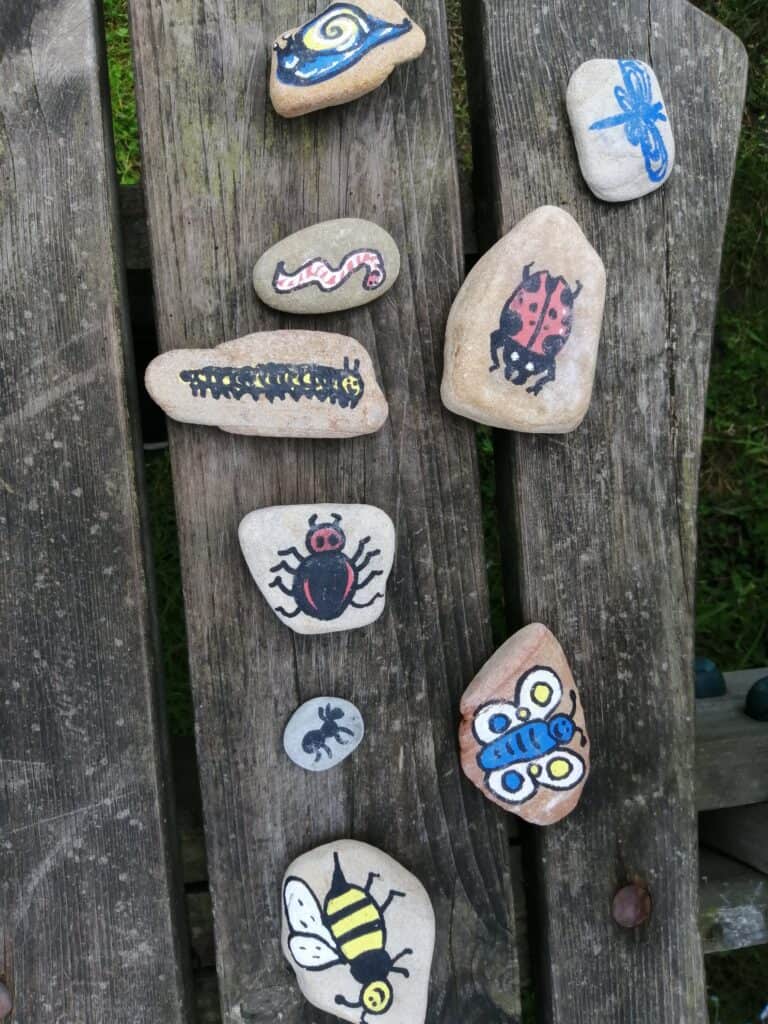


In week two the theme was ‘Branches and Birds Nests’ which linked to ‘The Owl Babies’ story. We learnt about different bird breeds, had sensory play with different feathers, listened to bird calls, met an owl family and built nests for the owls.
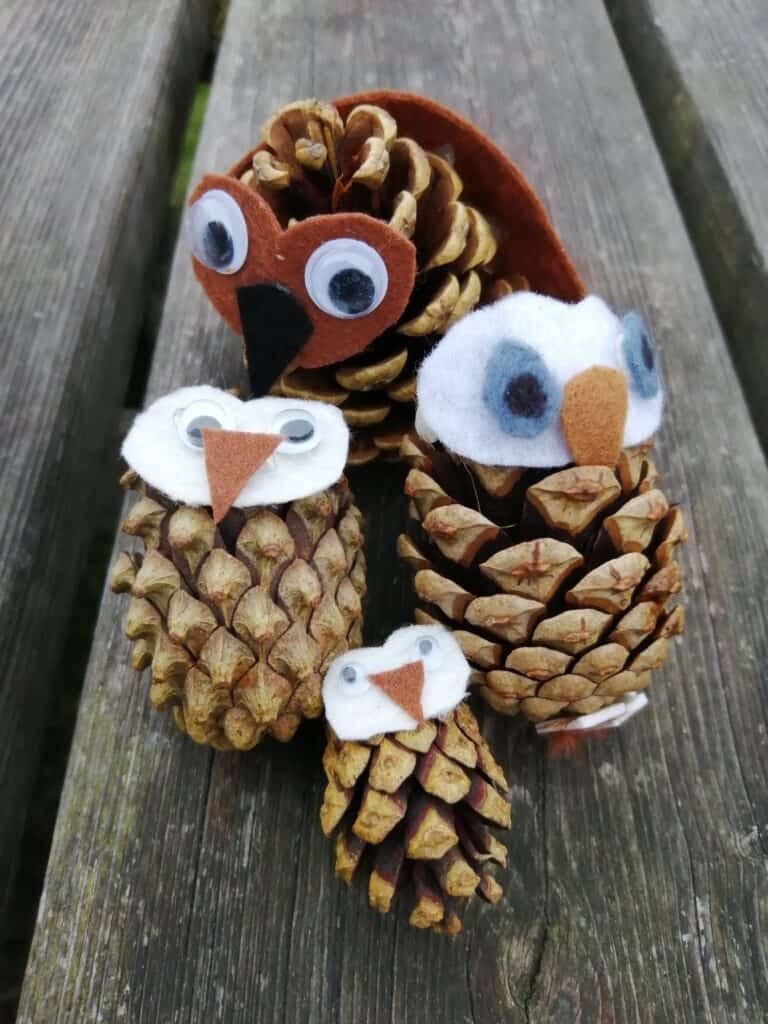
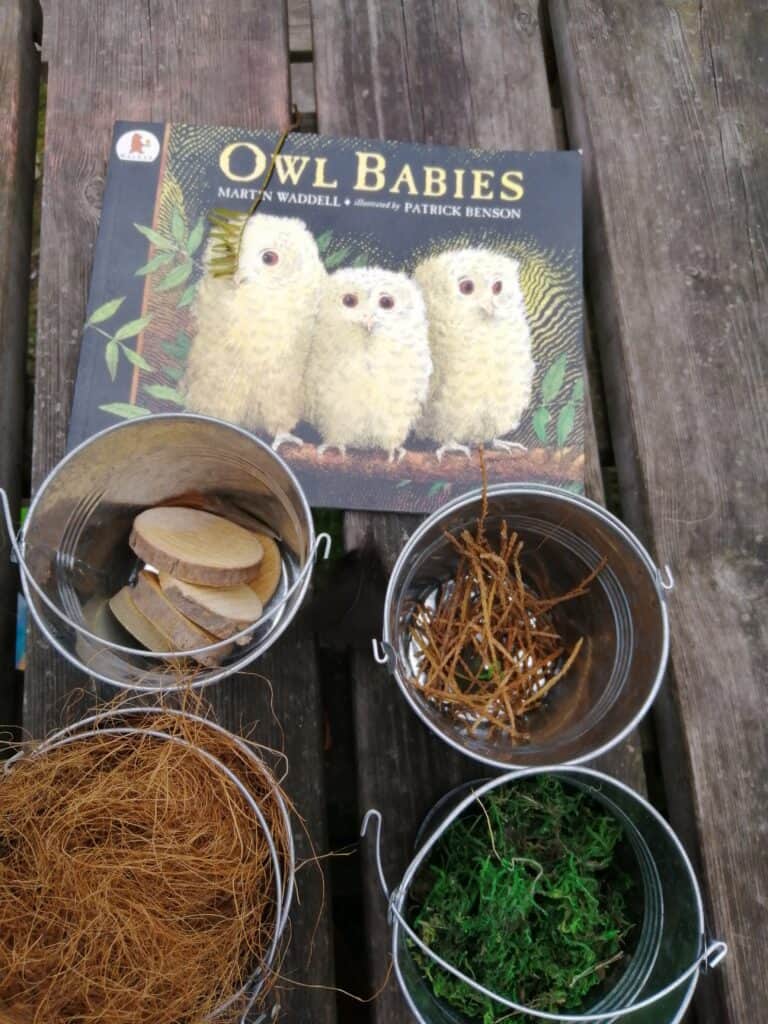
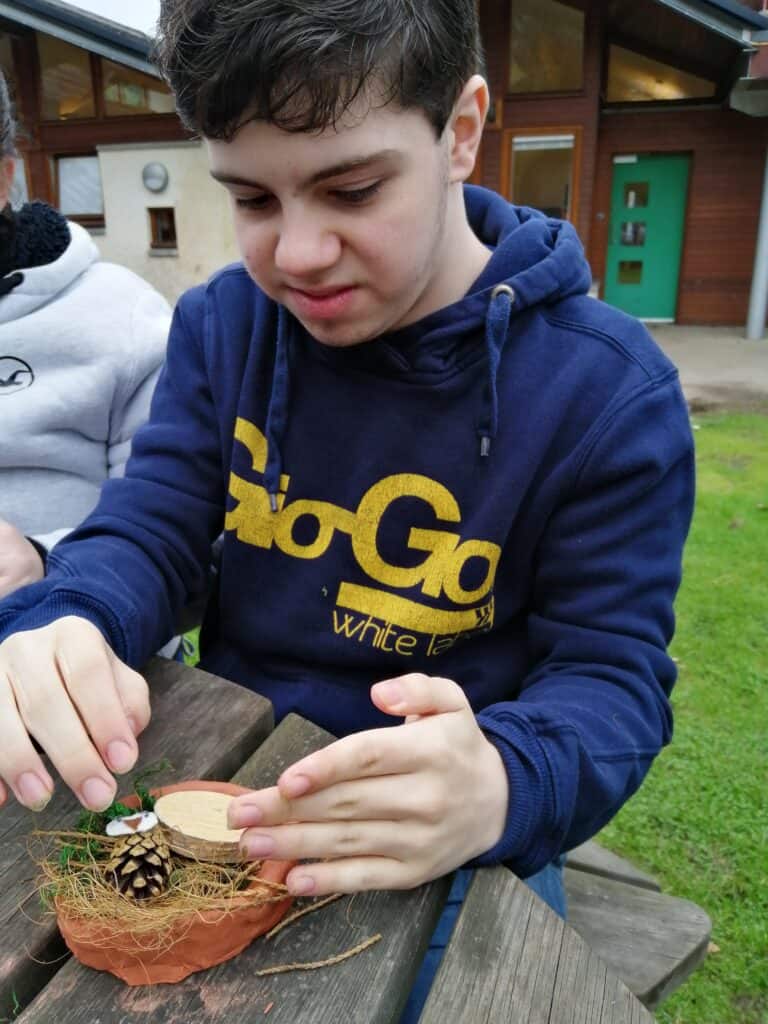

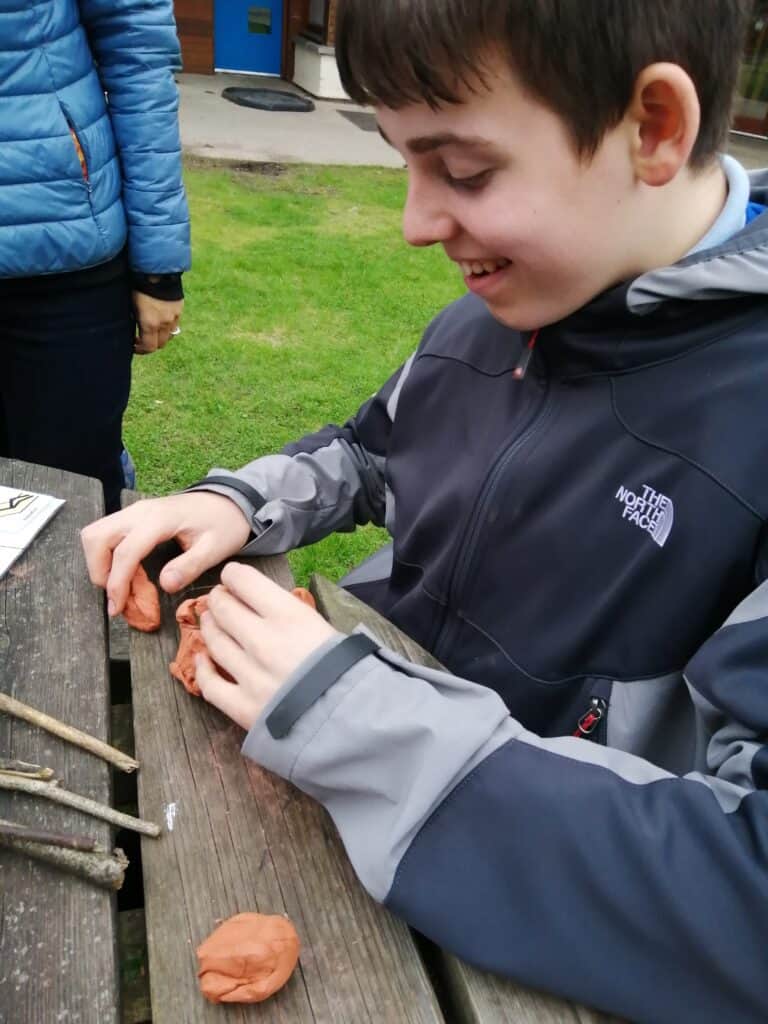
Week three’s theme ‘Puddles and Clouds’ went with ‘The Little Raindrop’ story. We explored the ocean, felt raindrops on our faces, acted out the water cycle and imagined being at sea in a storm with a range of sensory fabrics and theatrical props and costumes.
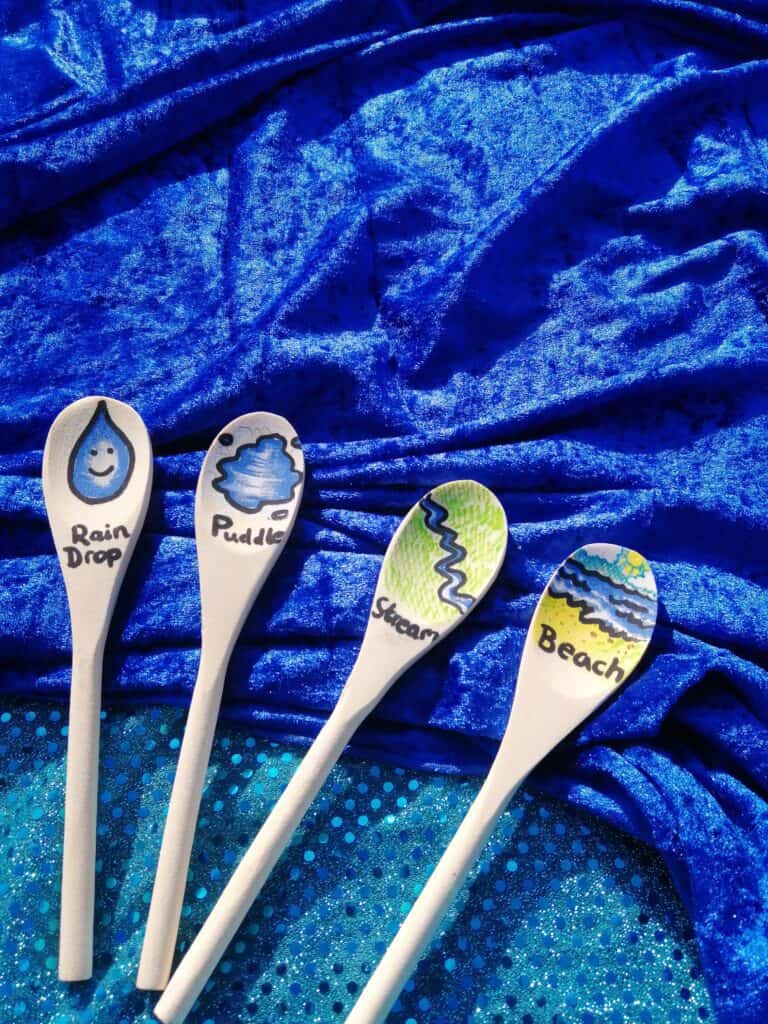

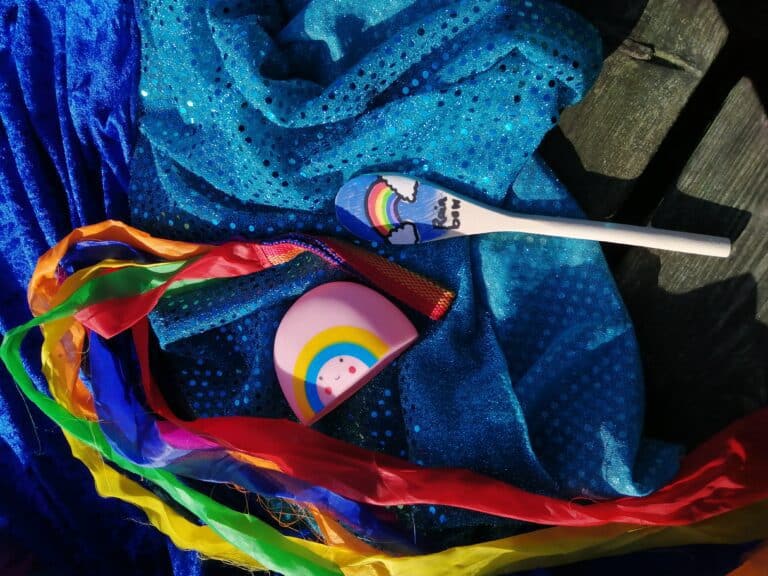
Week four was themed around the ‘Jungle and the Tree of Life’ with the Zimbabwean ‘Awongalema Tree’ story which was acted out in a particularly memorable performance by two pupils and some staff from David’s class.

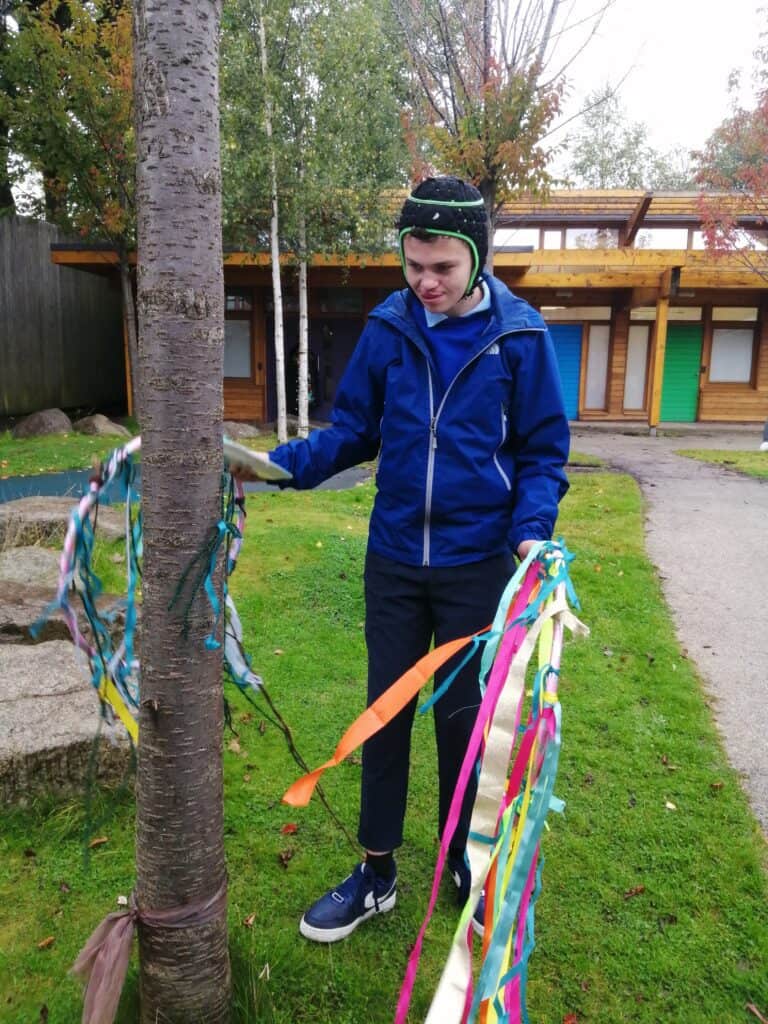
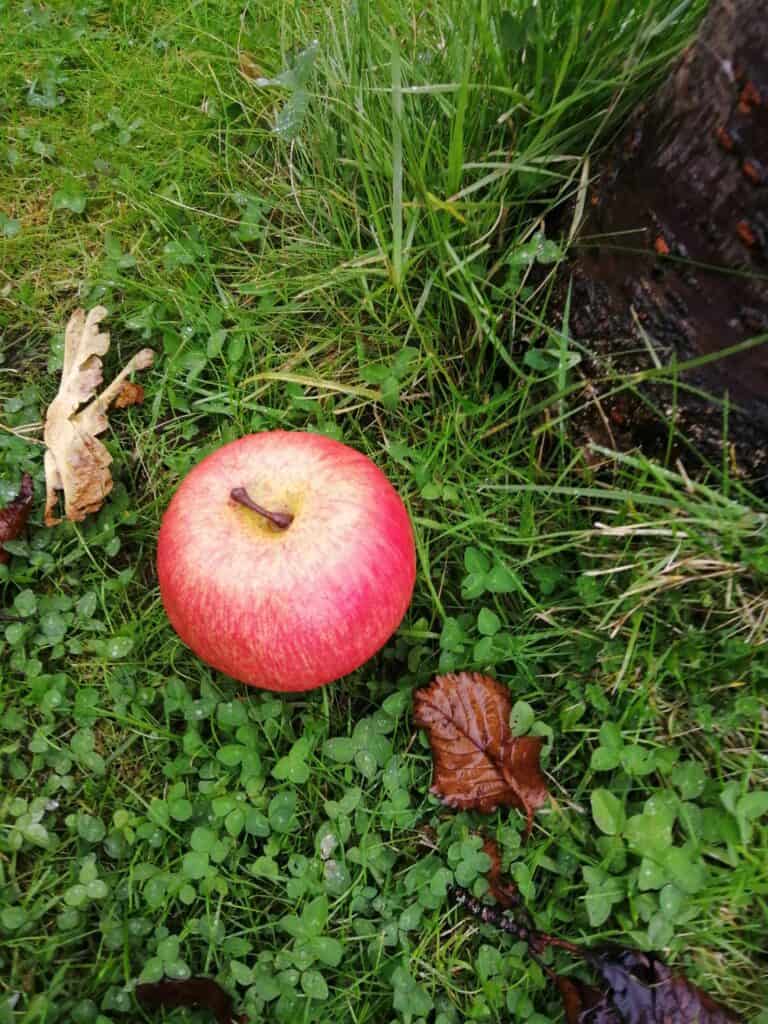
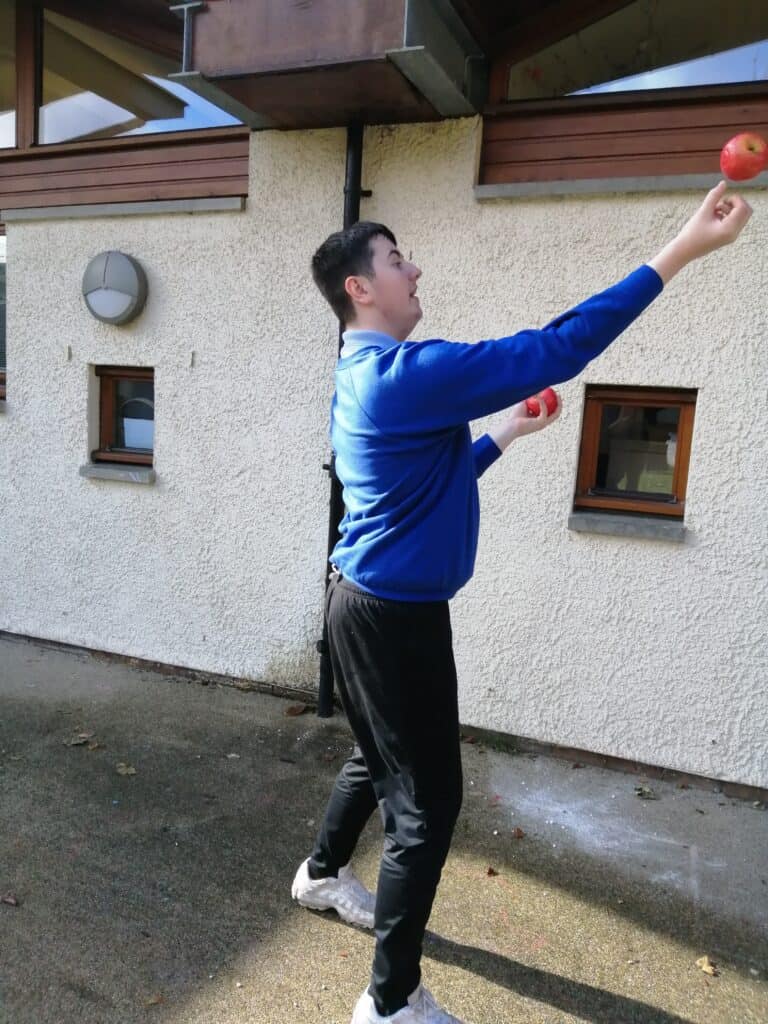

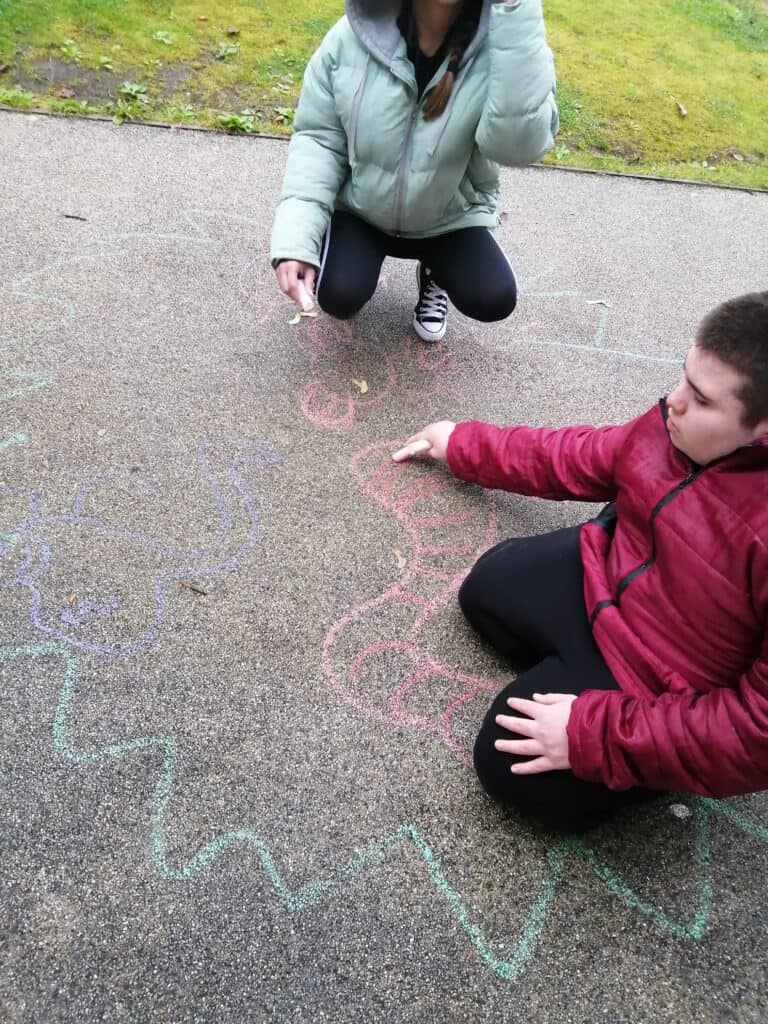
Autism and CLN Approaches for Drama and Creative Arts
For the classes who were more accustomed to working as a group, or those pupils with more verbal communication or able to follow a narrative, I planned a more typically structured ‘Out to Play’ session, using drama games, storytelling and nature activities with a degree of pupil-led flexibility on the day. For pupils requiring more one to one engagement and sensory learning, I focused on providing a range of sensory experiences and play-based interaction linked to the different themes, including things like using puppets, visual aids, props, costumes, messy nature play and sounds and working with support staff to find what pupils enjoyed or engaged best with.
Relationship and Trust
If at all possible, I think it’s essential for any incoming staff to begin to get to know the pupils, not as a list of names and accompanying information about medical or learning needs, but as unique young people and personalities with whom you’ll be building a relationship with over time. This was a major learning point taken from our previous two projects at Hampden and Langlands schools (both local authority schools for younger pupils with complex needs). Not only do many pupils with additional support needs require more time to get to know you as a staff member, but it’s absolutely essential to build up a relationship of trust, safety and mutual understanding, often on a one-to-one basis. East Park talk about this one to one social interaction in their training literature as “Intensive Interaction”.
On top of this, the pupils had all just been through a lockdown and were living under restrictions they’d likely never experienced, affecting everything from how often they could see their loved ones, to what was still allowed to happen within a school day. The effects of this on pupils who may already struggle with transition or require routine is not to be underestimated. Schools had all implemented new measures in order to reduce risk to safety and help stop the spread of the virus, and East Park had to do so in a way that was safe and also sensitive to their pupils’ needs. For all of these reasons, Eco Drama had arranged for me to visit the school in the weeks leading up to the project, to shadow classes, observe pupils and help pupils get to know my face and vice versa.
Pupil-Led Learning and Play-based Approaches
We can all say that we are ‘led by the child’ but what does this actually mean? Over my time at 3 Schools for Complex Needs I have really had to push myself to move away from my experience / training in leading heavily structured drama workshops and focus on skills that help everyone ‘go with the flow’. Here are some tips from my experience, which was cemented by my time working with the East Park staff and pupils:
1. ‘Go with the flow’ and say yes
This is something taught in Improv Theatre, in Theatrical Clown and by motivational speakers. Try not to focus too much on how you think an activity is going to or ‘should’ be received. Make your plan but be ready for it to change and don’t see that as a failure. Try to relax, take your time, adapt and and say yes to where the pupil wants to take the interaction (within reason of course, can I climb onto the roof, maybe not!)
2. Play is Learning, Learning is Play
It’s not ‘just playing’. If you already work with early years children you will know that life’s learning all begins through playing. Play teaches us to problem solve, experiment and learn about most of life. Being able to play is also really useful in a complex needs setting. So you as an adult might need to find your inner child, forget feeling ‘silly’ and play on a child’s level, and you’ll probably have fun in the process!
3. Find The Game
Also a technique taught in Improv theatre, Theatrical Clown and more. This was a method staff were already using at East Park that helps to give structure to ‘free play’. What is the game we are playing? Is it “Call and Response” with words or sounds? Is it simply ‘catch the ball’? Hide under the table? Try to find as many sounds as we can from hitting a stick off a tree? Remember that repetition is also learning, and some pupils may require many more repetitions to learn a new skill. Be patient and play along. Imagination also helps pupils with Autism learn social skills and envisage future scenarios which can help with anxiety and problem solving. So if your pupil is role-play ready or able to use their imagination, let it run wild, even if it goes off your plan!
4. Interactive Stories
Storytelling does not have to be ‘sit down and listen’! Can you involve pupils in the story with questions and answers, drama exercises, acting out the story, bringing it alive through sensory props, puppets, song, music and visual aids such as story stones, story spoons, flashcards or an art activity?
5. Non-verbal Communication
Staff at East Park use a combined method of Augmented Communication to support each learner, including tools like Talkers, sign language/Makaton, Visual Symbol boards and more to help their pupils express themselves. If you’re not an expert in these types of communication, you can still try to pay attention to body language. Think about simple, clear gestures and slow, purposeful speech. What is your body language saying? Get to know your pupils’ body language too and soon you will learn to pick up their cues.
6. Acknowledging and Mirroring
Another crossover with East Park’s Autism approach and Drama is paying close attention to someone and mirroring their movements, sounds and gestures. This can be a way of acknowledging and affirming a pupil’s communication. Similarly to how we naturally interact with early years children, mirroring is a way to say “I see you, I hear you,” and can lead to some beautiful moments of connection and interaction.
7. Processing Time
Breathe! Processing Time has been a huge area of learning for me. If you are used to working with mainstream pupils or groups of typically developing children you might have a tendency to whizz through everything at speed. Most of us also speed up our speech if we are feeling nervous! Drama training teaches about the use of breathing, clearly articulating your words and being aware of pace. I found this quite useful experience for this setting, but I still had to really try to slow myself down as I learnt about the importance of processing time. Do not assume that someone who is ‘just listening’ or ‘just watching’ is not engaged or not paying attention, we had a pupil repeat a fox sound his teacher played during our session a full 24 hours later, and this was then built into Teacher week in a song.
8. Prepare for Messy Play and Sensory exploration!
This will be standard for many of you working with children anyway, but it really can help learning and development if we adults can learn to prepare for mess and let pupils fully experience their senses. The staff at East Park were already up for lots of messy play so this was fantastic. Something you as an adult may find revolting could be an amazing sensory experience for someone else, so be careful you’re not deciding against activities purely on that basis.
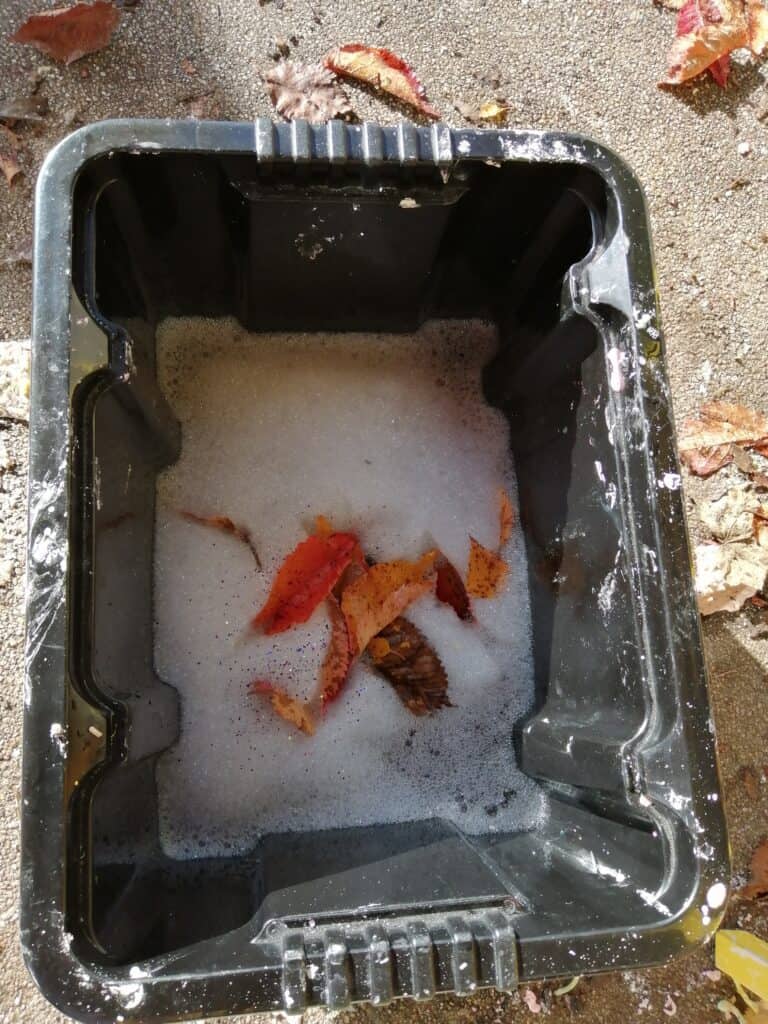

Working outdoors with Pupils with CLN or ASD
A big open space can be both freeing and overwhelming for pupils, as can the sights and sounds of different weather and other pupils in the playground. In this setting, where the playground was also a breakout or chill-out / play time zone throughout the day, it made sense to station myself at the central picnic table and start all the sessions there. This also meant that for any pupils who needed time to engage on their own terms, I could lay out some intriguing items on the table each week inviting them to come and engage when they felt ready.
A few points to consider:
- Can you minimise ‘distraction’ or point your pupils’ attention to one part of the playground?
- Are you able to arrange a short time when no other classes will be outside?
- Do you need to start and finish indoors and build up from a very short to a longer outdoor activity?
- What safety elements need risk assessed? Are your pupils ready for the weather and do you have any shelter?
- We also discussed ways to section off parts of the outdoor area (such as den/tent/shelter building, chalking out areas or use other less busy nearby spaces such as the school’s sensory garden or nearby children’s wood, for creative activity).
- How can you make your playground more suitable/imaginative/visually interesting for creative play, storytelling, drama and nature connection?
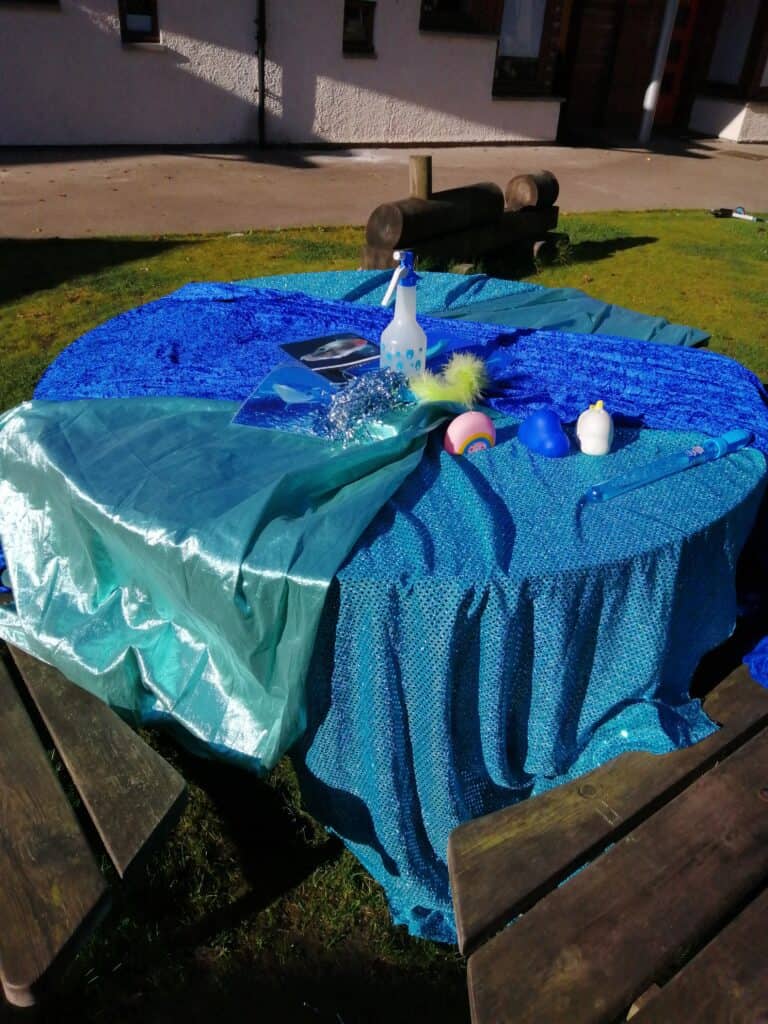

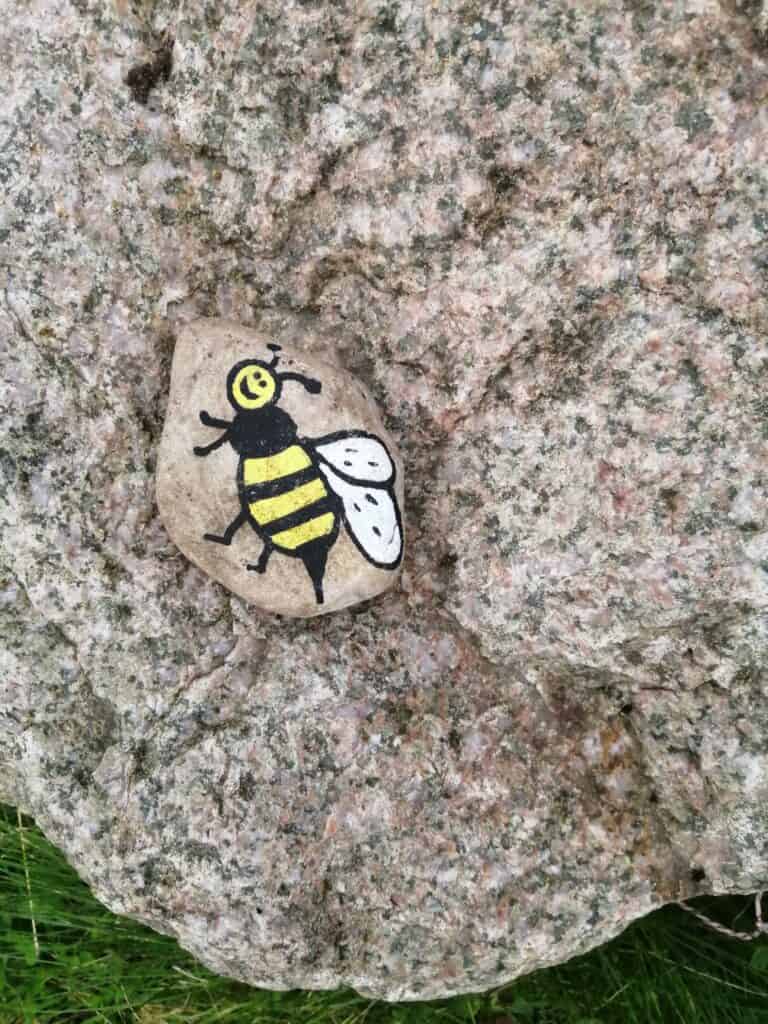
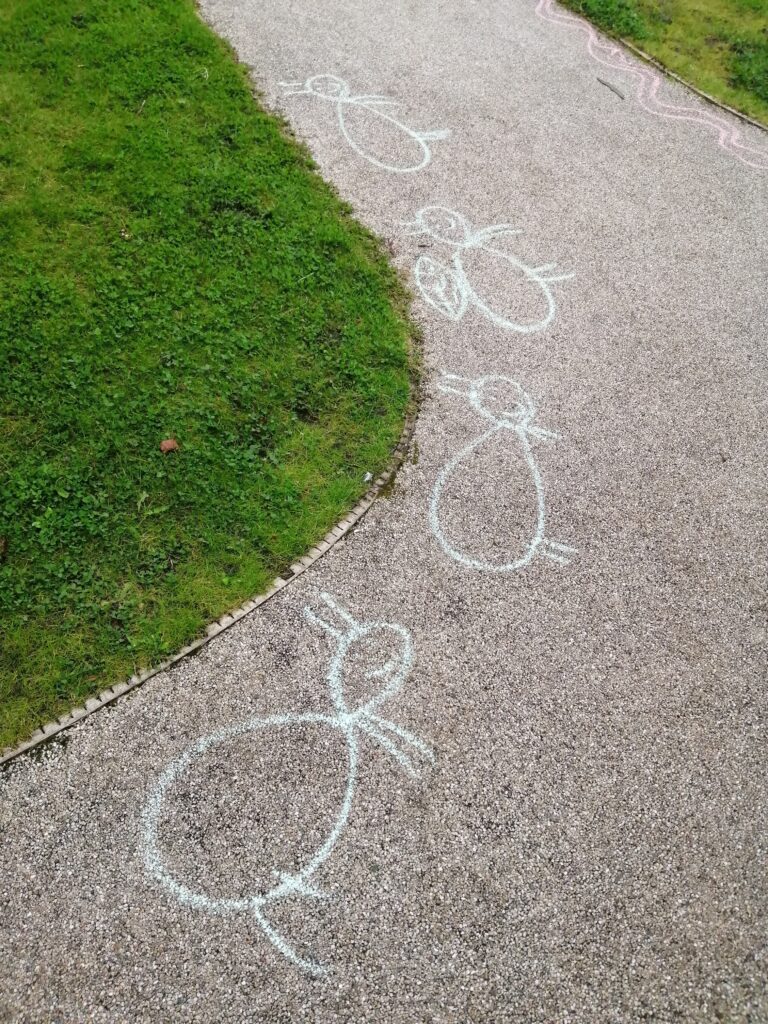
Continuing Professional Development
While working in a mainstream context, teachers are able to follow a creative, flexible and lightly structured ‘Out to Play’ session plan when creating their own outdoor lesson using drama and storytelling. This structure has to be more flexible when working in complex needs schools, so participating teachers at East Park interpreted this in a way that suited their pupils. Some teachers needed to work indoors for part or all of their activity, some worked individually with pupils and some with the whole class.
In week 4 we worked on different creative planning approaches and how to break down what drama can be for a complex needs learner, aided by the Out to Play Resource Packs.

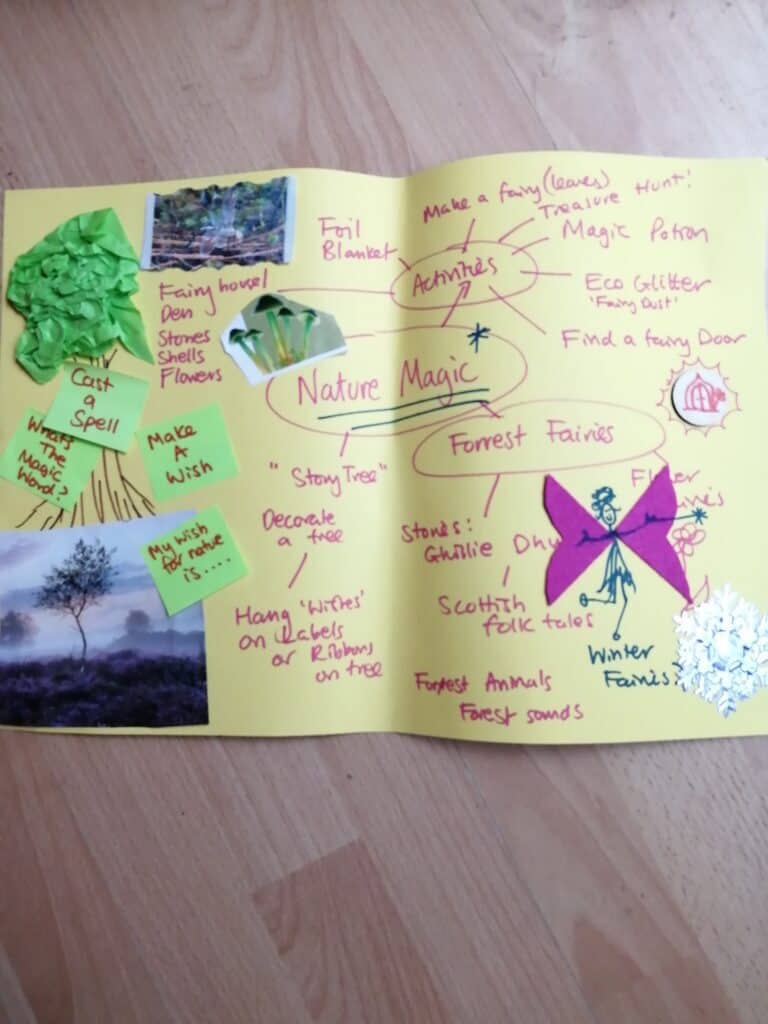
Teachers prepared their own Out to Play activities for delivery in week 5 of the residency, and utilised a mixture of music, song, movement, sensory, drama and play techniques to encourage learning and enjoyment of nature. David’s class explored the Sounds of Autumn, Tim’s class focussed on Animal Sounds and Song (sorry Tim I forgot to get some photos of that but it was lots of fun!), Peter’s class explored Trees, and Clara’s class explored the Seasons.

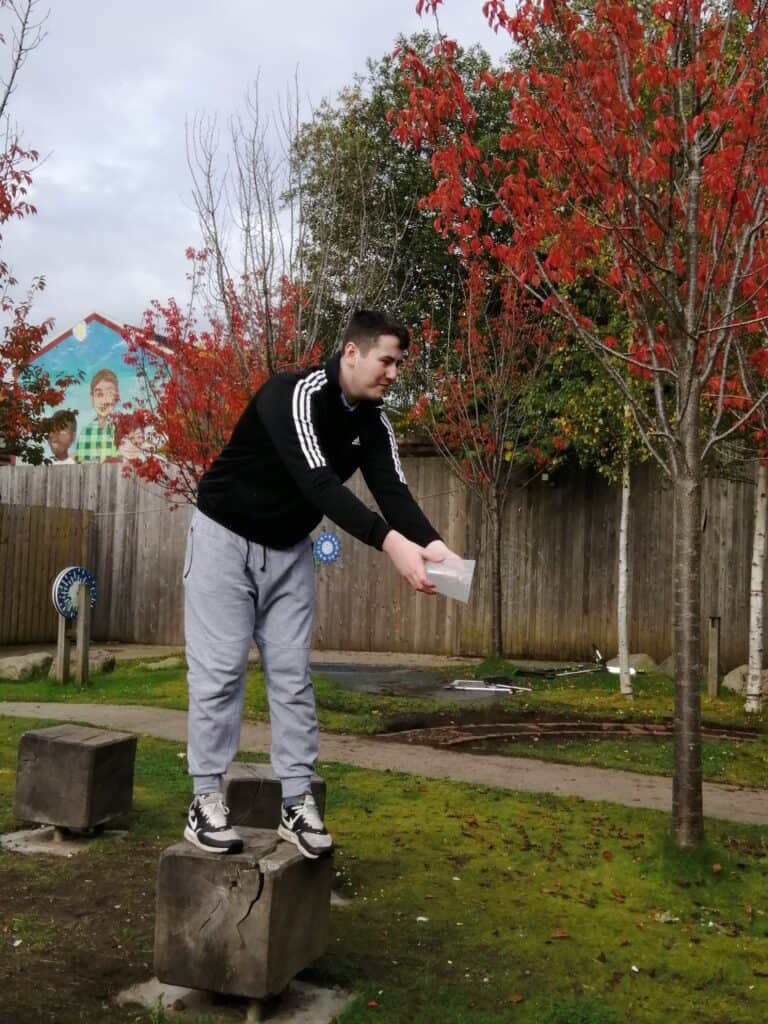
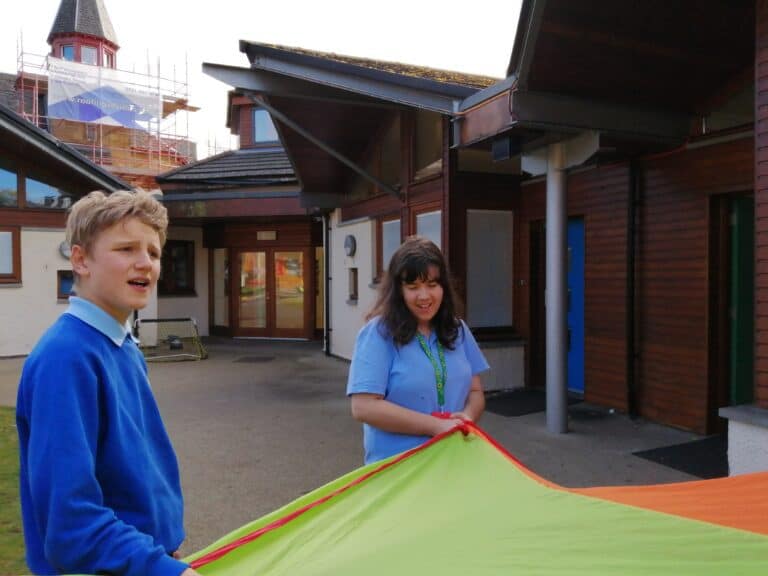

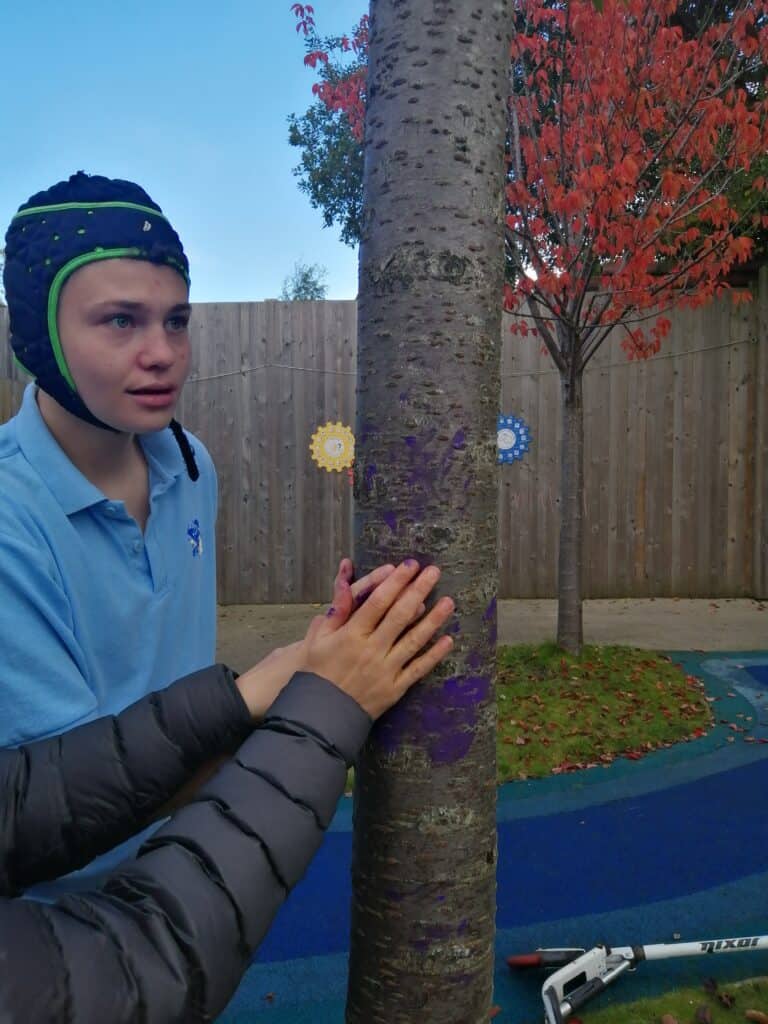
We also worked on some additional imaginative, creative play, drama and storytelling techniques at the end of the project, and staff began thinking about some ways to plan creative outdoor experiences in the future.
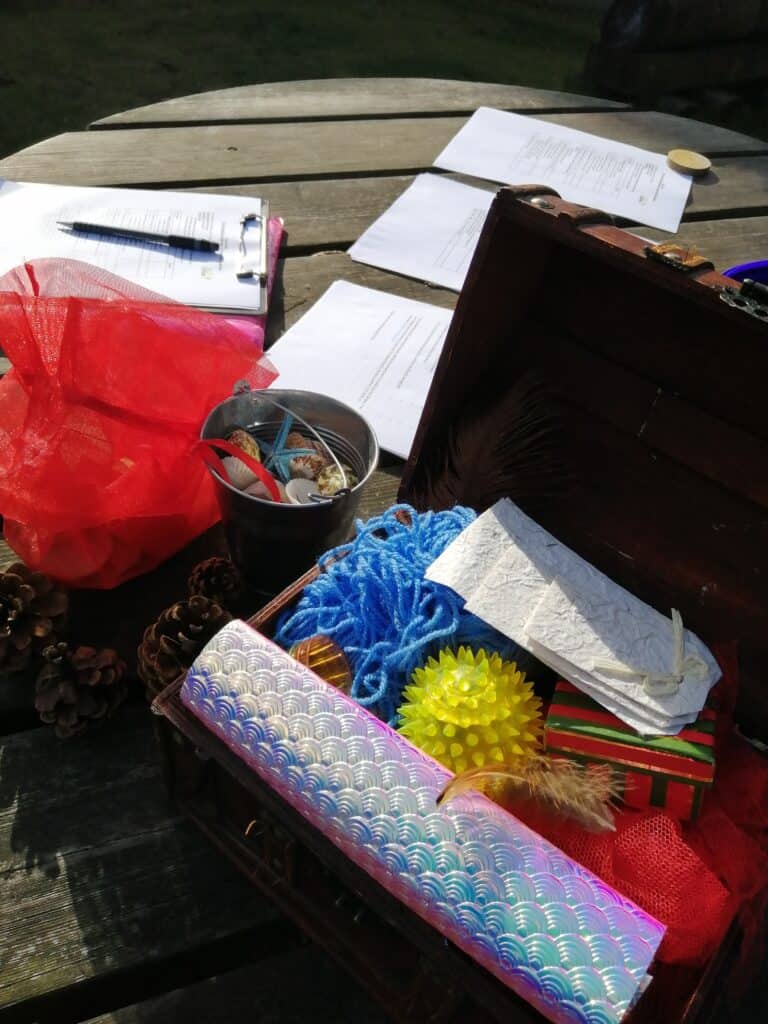
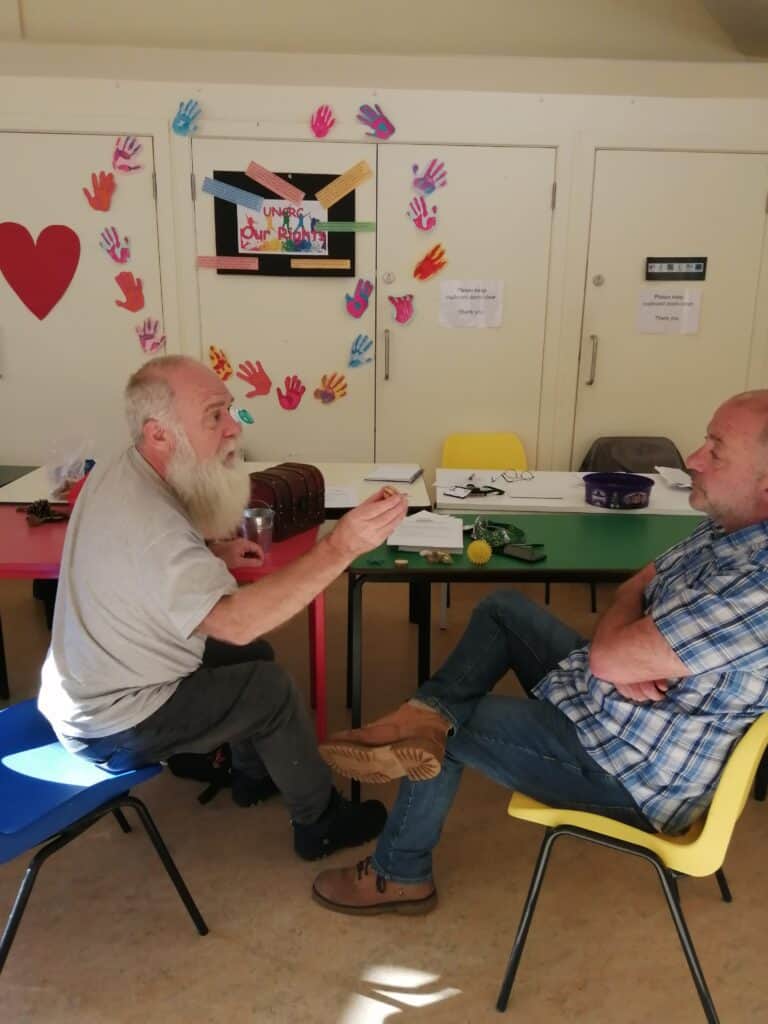
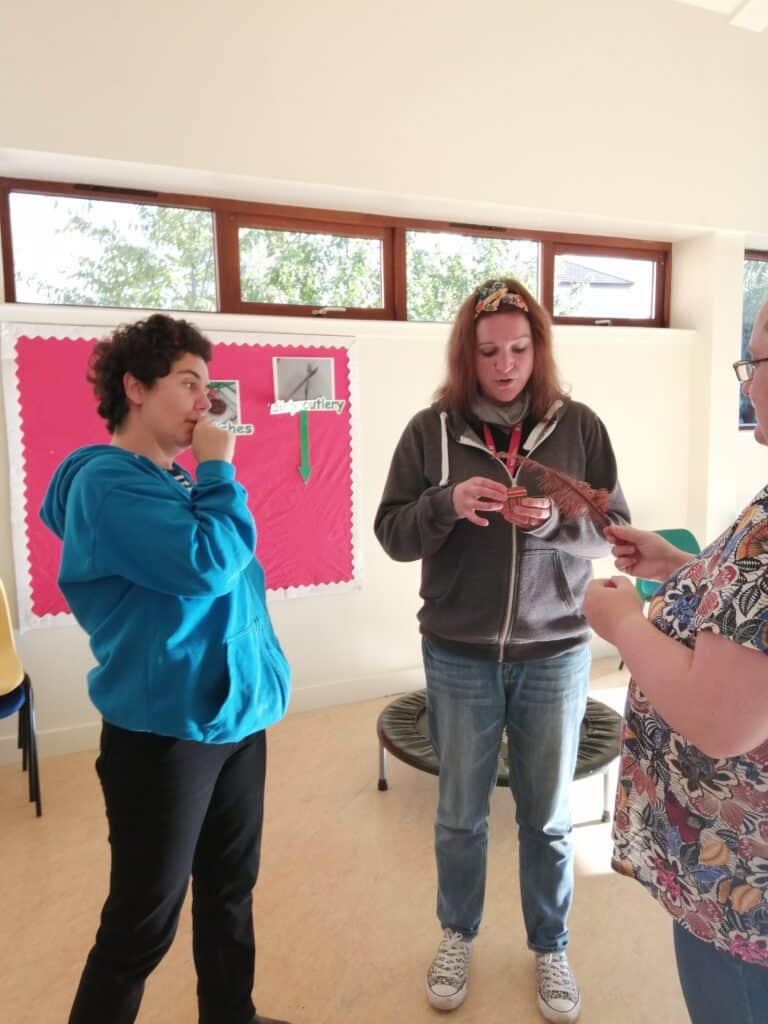

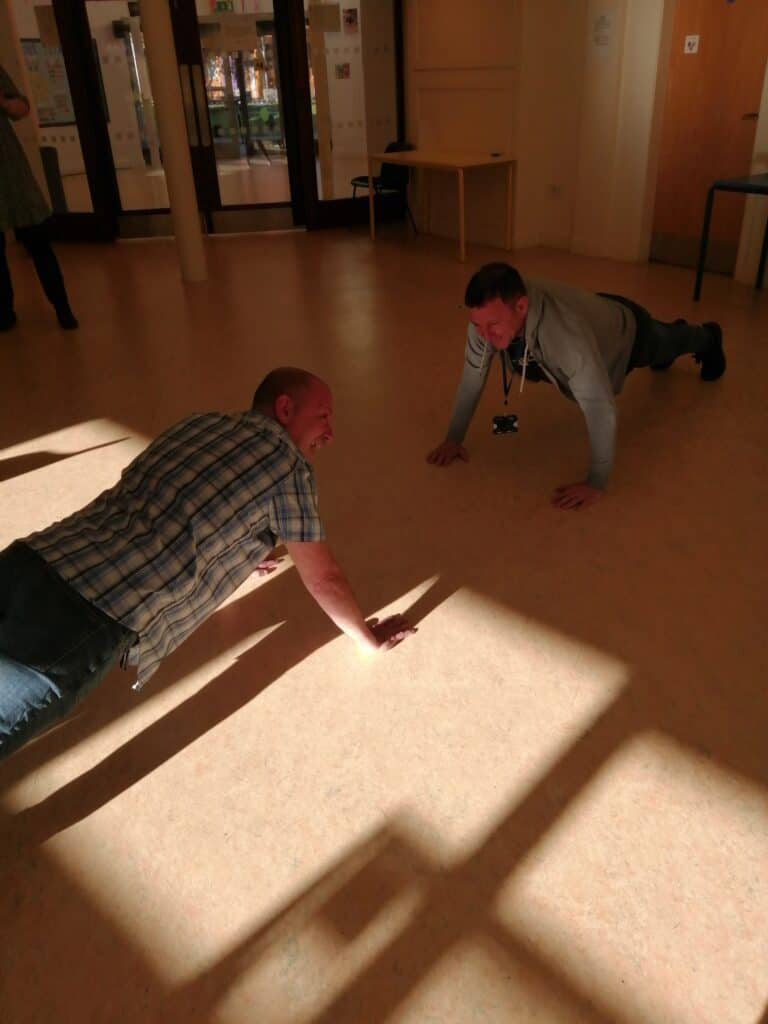
Conclusion and Thank Yous
East Park has an outstanding staff team and truly inspiring school atmosphere. The school is pioneering in specific Autism and complex needs approaches, having developed a range of training approaches for professionals working in this area. The supported living part of the establishment supports the young people in their everyday lives, working with the school and felt like a big extended family. In these times, it was quite emotional to see how tirelessly the staff are working, alongside the families and friends, to maintain the pupils’ education, social/ emotional development and mental health. And the team I met are doing so all with good humour and the young people’s well being as their top priority. In my view, these professionals really are the unsung heroes we could give more credit to when we think of key workers.
An extra thank you to staff at Hampden and Langlands Schools for pupils with Complex Needs, the experience I gained from working with you really helped me develop my approach for CLN this year!
And of course, thank you East Park, pupils and staff, You are Fantastic!!!
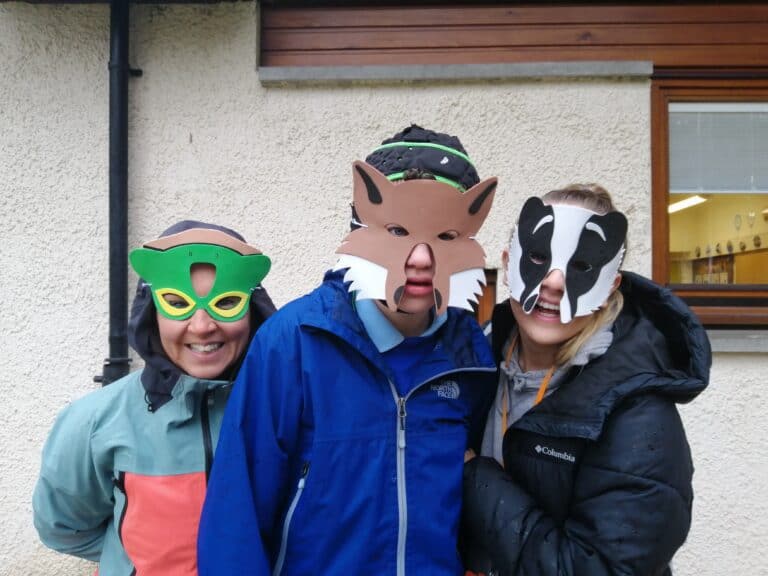
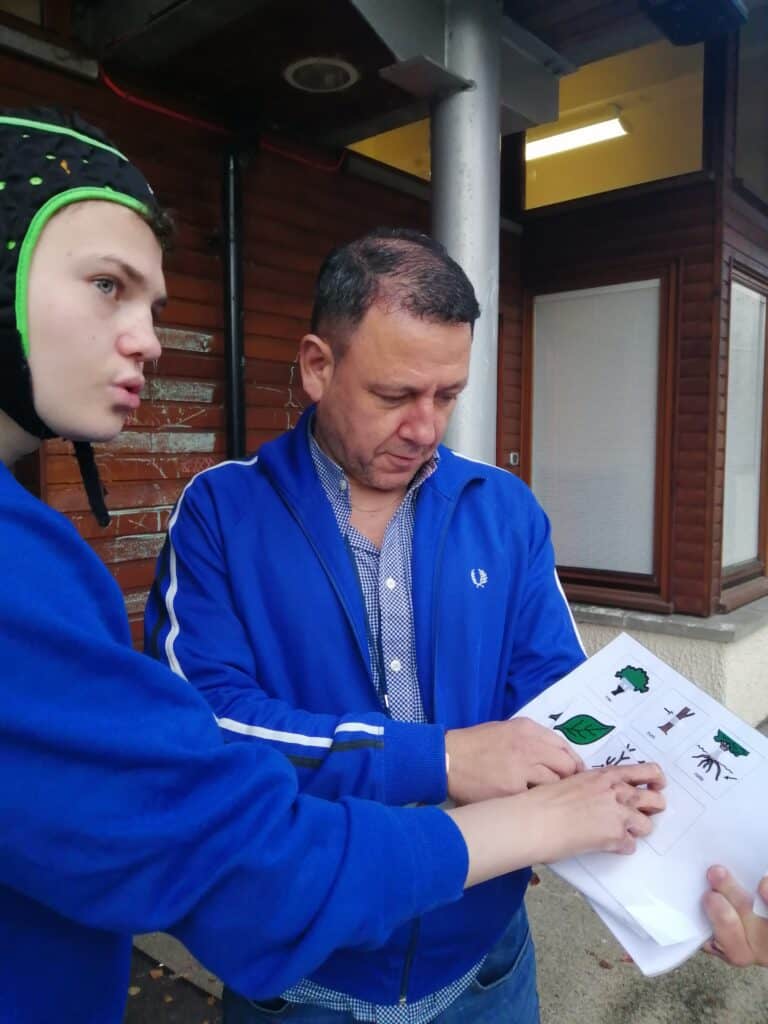
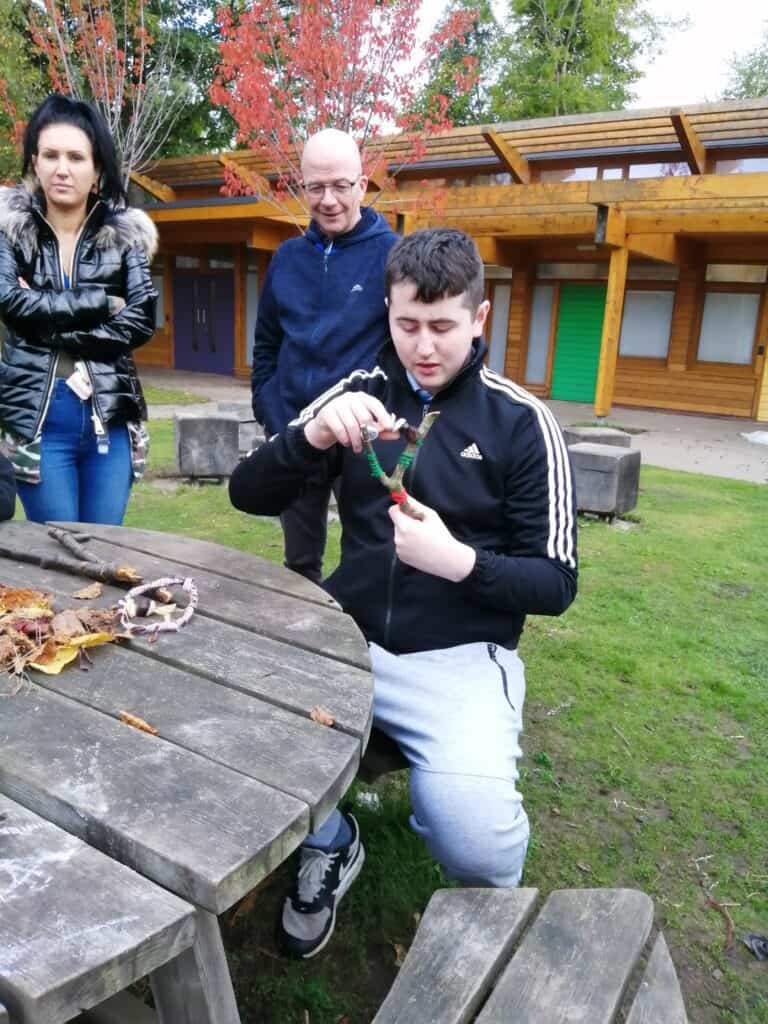


Thank You East Park for ‘Out to Play’ 2020!
By Sophie McCabe, October 2020

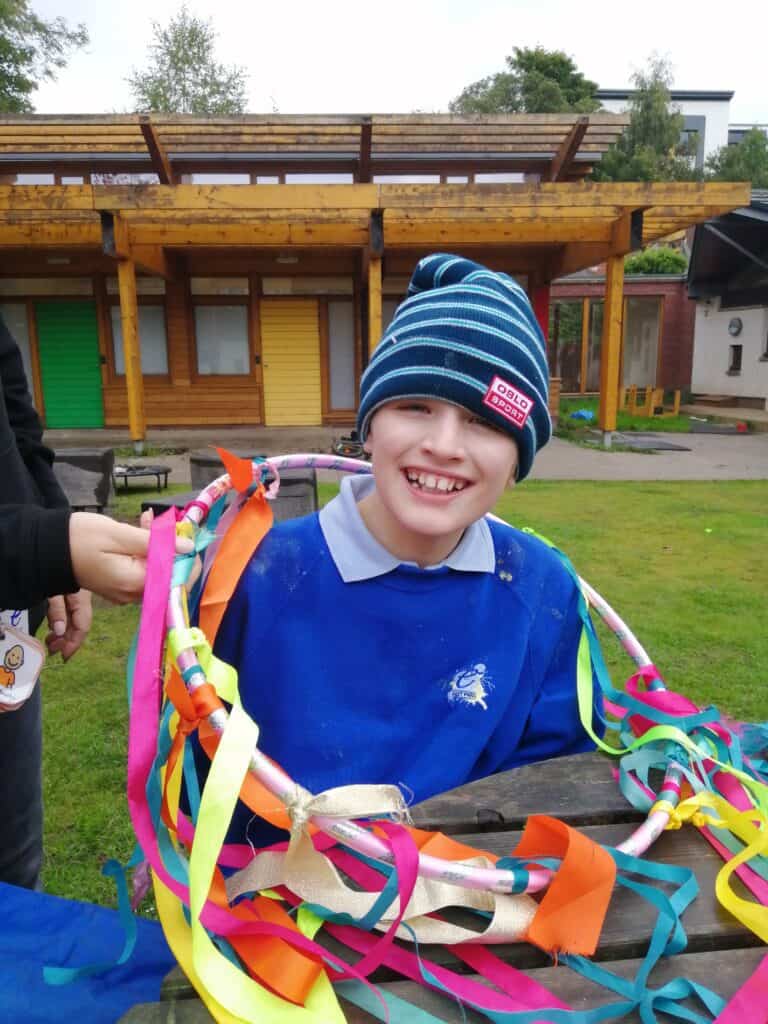

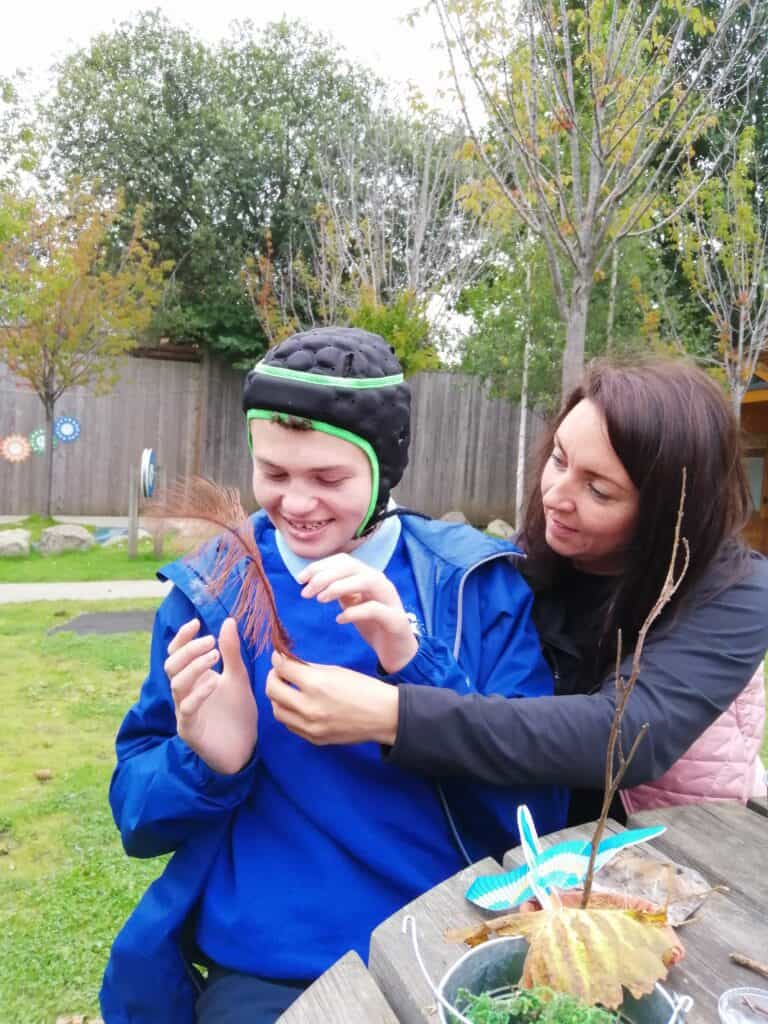


![glasgow city council logo [black] Glasgow City Council logo](https://ecodrama.co.uk/wp-content/uploads/2023/12/glasgow-city-council-logo-black.png)

What an inspiring, fun and inspirational project. Looks like it was enjoyed by all!